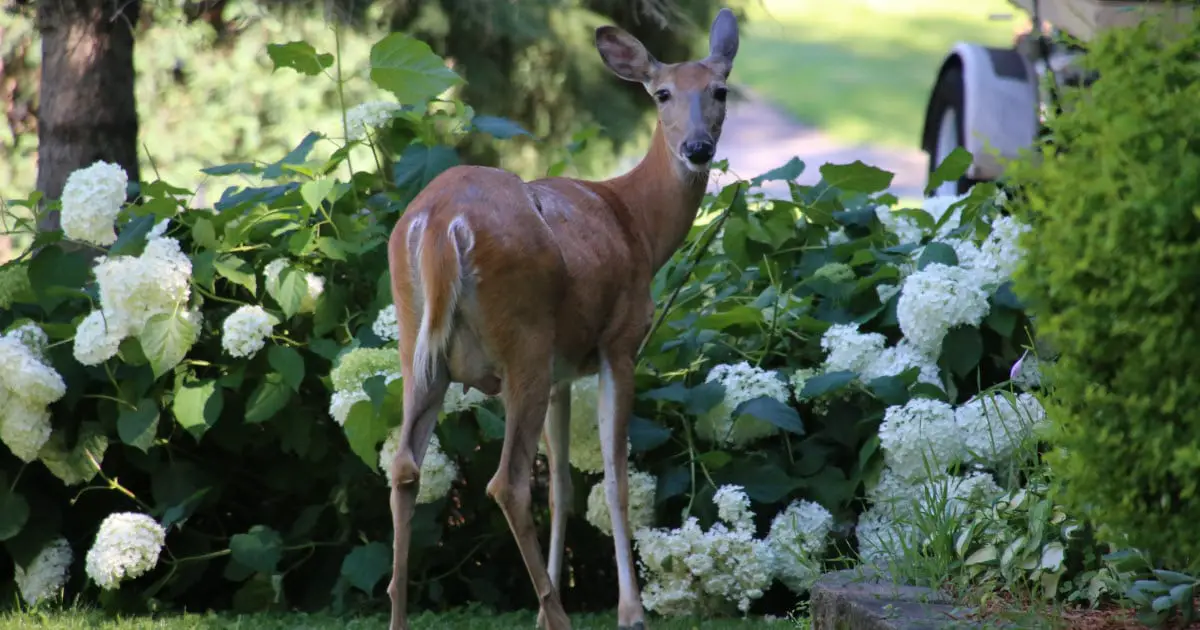Hydrangeas And Deer: A Match Made In Nature
Hydrangeas and deer are two creatures that seem to be made for each other. Both are beautiful, graceful, and found in a variety of habitats. But while hydrangeas are prized for their stunning blooms, deer see them as a tasty snack. As a result, hydrangeas and deer can often find themselves in conflict.
In this blog post, we'll take a closer look at the relationship between hydrangeas and deer. We'll discuss what deer like about hydrangeas, how to protect your hydrangeas from deer, and some tips for coexisting with these two creatures.
What Do Deer Like About Hydrangeas?
Deer are herbivores, which means they eat plants. Hydrangeas are a good source of food for deer because they are high in carbohydrates and water. Deer also like the taste of hydrangea leaves and flowers.
In addition to being nutritious, hydrangeas are also easy for deer to eat. The leaves and flowers are soft and tender, and they grow in clusters, making them easy for deer to reach.
How to Protect Your Hydrangeas from Deer
If you have hydrangeas in your garden, you'll want to take steps to protect them from deer. Here are a few tips:
- Fencing. The most effective way to keep deer out of your garden is to fence it in. A deer-proof fence should be at least 8 feet tall and made of a material that deer can't chew through, such as metal or plastic.
- Repellents. There are a number of commercial deer repellents available. These repellents can be sprayed on your hydrangeas or placed around the base of the plants.
- Physical barriers. You can also use physical barriers to keep deer away from your hydrangeas. These barriers can include rocks, chicken wire, or even human hair.
- Planting deer-resistant plants. There are a number of plants that deer don't like to eat. These plants include lavender, rosemary, and daffodils. If you plant these plants near your hydrangeas, it may help to deter deer from eating them.
Tips for Coexisting with Deer
If you have deer in your area, it's important to learn how to coexist with them. Here are a few tips:
- Don't feed the deer. Feeding deer can make them more dependent on humans for food, and it can also make them more aggressive.
- Be aware of deer activity. Pay attention to where deer are frequenting in your yard, and avoid planting hydrangeas in those areas.
- Don't leave pet food outdoors. Pet food is a major attraction for deer, so it's important to keep it indoors.
- Be patient. It may take some time to find a way to protect your hydrangeas from deer. Don't give up, and keep trying different methods until you find one that works.
Conclusion
Hydrangeas and deer are two creatures that can coexist peacefully if you take the necessary precautions. By following the tips in this blog post, you can protect your hydrangeas from deer and enjoy their beauty for years to come.
If you're a hydrangea lover who lives in an area with deer, you know the struggle. These beautiful creatures can quickly devour your prized plants, leaving you with nothing but bare sticks. But don't despair! There are ways to protect your hydrangeas from deer damage.
One option is to plant deer-resistant hydrangeas. While no hydrangea is completely immune to deer, some varieties are less appealing to them than others. These include oakleaf hydrangeas, Annabelle hydrangeas, and smooth hydrangeas.
If you don't have the option of planting deer-resistant hydrangeas, you can try using a deer repellent. There are many different types of deer repellents available, so you'll need to experiment to find one that works for you. Some people have success with using commercial deer repellents, while others prefer to make their own.
Another option is to build a physical barrier around your hydrangeas. This could be a fence, a wire mesh, or even a row of tall plants. The barrier should be tall enough to discourage deer from jumping over it, and it should be placed around the entire plant, not just the base.
If you're willing to put in a little extra effort, you can also try training your deer to avoid your hydrangeas. This involves gradually exposing them to the plants in a controlled environment, and then gradually increasing the amount of time they spend around the plants. It's a slow process, but it can be effective.
No matter which method you choose, it's important to be proactive in protecting your hydrangeas from deer damage. By taking steps now, you can enjoy your beautiful plants for years to come.
Image of hydrangea and deer
Here are 5 different images of "hydrangea and deer" from Pinterest:
- A deer grazing on the leaves of a hydrangea bush.

- A deer standing under a hydrangea tree, its antlers brushing against the flowers.

- A deer drinking from a puddle of water that has collected in the bottom of a hydrangea flower.
- A group of deer frolicking in a field of hydrangeas.

- A deer silhouetted against a backdrop of hydrangeas in bloom.

Post a Comment for "Hydrangeas And Deer: A Match Made In Nature"